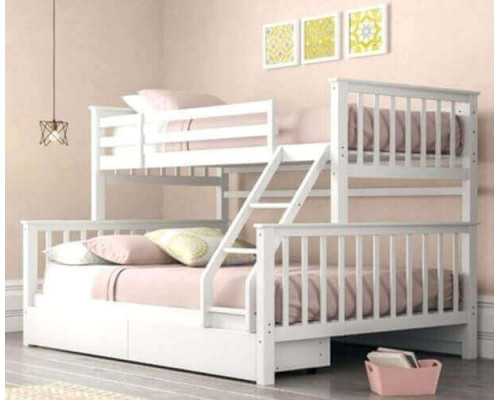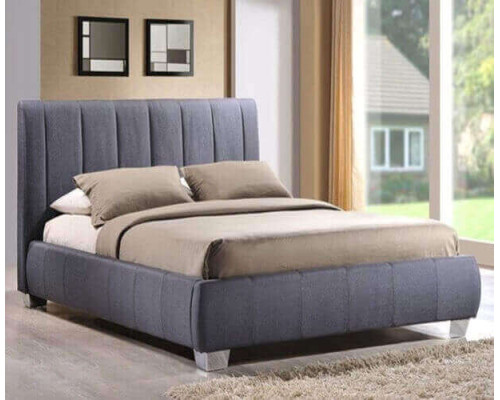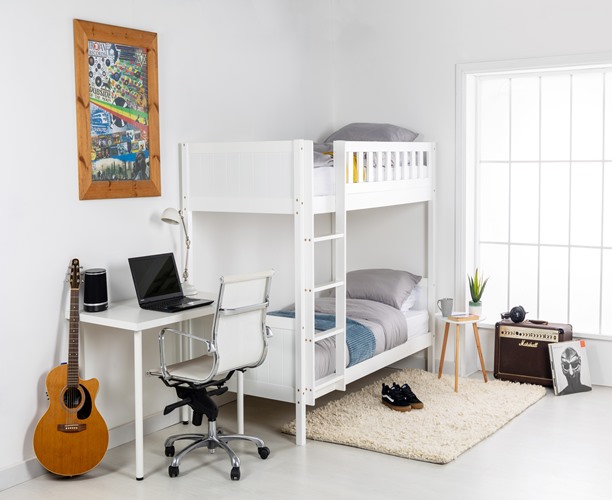Bunk Beds: The Advantages and Disadvantages

The Pros and Cons of Bunk Beds
Bunk Beds are famous for saving home space, especially for shared bedrooms, dormitories, or small apartments. They offer several advantages:
- Space Efficiency: Maximizes floor space, ideal for smaller rooms.
- Fun for Children: Climbing to a top bunk can excite bedtime.
- Cost-Effective: More affordable than buying two beds.
- Customizable: Available in designs with built-in storage or desks.
However, there are also disadvantages:
- Safety Concerns: Risk of falling, especially for younger kids.
- Difficulty Making the Bed: Changing sheets on the top bunk can be tricky.
- Limited Lifespan: Kids may outgrow bunk beds as they age.
- Climbing Inconvenience: Night-time trips can be hazardous for younger children.
What Are Bunk Beds?
Bunk beds consist of two stacked beds, maximizing vertical space. They’re instrumental in homes where space is at a premium, providing a practical solution for multiple people sharing a room.
Advantages of Bunk Beds
Space Efficiency
Bunk beds free up floor space, allowing play areas or additional storage.Fun Factor for Children
Kids love the adventure of climbing to a top bunk, creating excitement around bedtime.Customizable Designs
Many models include features like desks, shelves, or storage drawers, offering versatile designs to suit different decor and needs.Cost-Effective Solution
Bunk beds are often cheaper than buying two individual beds, making them a budget-friendly option.Great for Guest Rooms
Bunk beds offer a solution for accommodating more guests in limited spaces, such as holiday homes, caravans, and guest rooms.
Disadvantages of Bunk Beds
Safety Concerns
Younger children face the risk of falling, making safety features like guardrails and sturdy ladders essential.Challenging to Make the Top Bunk
Making or changing sheets on the top bunk is often tricky due to the height.Limited Lifespan
Children may outgrow the top bunk as they grow, and cheaper models may wear out over time.Privacy Issues
Shared sleeping arrangements can be uncomfortable for those who prefer more privacy.Inconvenience of Climbing
Constant climbing to and from the top bunk can become tiring, especially for younger children.
Ideal Uses for Bunk Beds
- Shared Bedrooms: Maximizes floor space for multiple children.
- Dormitories and Hostels: These are commonly used to house more people in confined areas.
- Holiday Homes: Bunk beds are perfect for cabins or small spaces with limited room for guests.
Tips for Choosing the Right Bunk Bed
Material & Durability
Choose bunk beds made from high-quality materials like solid wood or metal for long-lasting use.Safety Features
Ensure the bed has essential safety elements, such as guardrails and sturdy ladders.Size & Space Considerations
Measure your room and ensure the ceiling height is adequate for the top bunk.Multifunctional Designs
Consider designs with additional storage or built-in desks for extra functionality.
In Conclusion
Bunk beds can be a fantastic solution for maximizing space while being functional, fun, and budget-friendly. However, weighing safety concerns and practical considerations before purchasing is essential. By evaluating your family’s needs and available space, you can make the best decision when choosing a bunk bed for your home.











